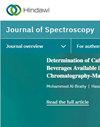Nonlinear Correction Methods of Temperature-Caused Peak Shift for a NaI(Tl) Gamma-Ray Spectrometer
IF 2.1
4区 化学
Q4 BIOCHEMICAL RESEARCH METHODS
引用次数: 0
Abstract
NaI(Tl) detectors are frequently operated under unstable temperature conditions when used in an open environment. Temperature changes would result in a peak shift and spectral distortion during measurement. Two easy-to-implement methodologies are proposed to stabilize the measured spectrum without the necessity of adjusting the gain, which are a correction algorithm for temperature-caused peak-shift based on multiple characteristic peak area weighting factors and an interpolation correction algorithm based on multicharacteristic peak sequence. Both of them can be used when the relative channel displacement of characteristic peaks in the spectrum due to temperature changes is not constant. Experimental data obtained under controlled temperature conditions in the laboratory were adopted to correct a spectrum, with joint consideration of some known characteristic peaks, such as 40K, U (214Bi), or Th (208Tl) peaks. Through constructing a reversible temperature coefficient matrix, one can easily obtain the coefficients of the n-th polynomial describing the influence of temperature on peak position, which presents their nonlinear mathematical relationship. Then, corrections of these two effects can also be easily calculated. Comparing the experimental results, peak positions before and after correction, it is proved that the interpolation correction algorithm based on multicharacteristic peak sequence has better correction accuracy, but the temperature-caused peak shift correction algorithm based on the multicharacteristic peak area weighting factor has a shorter calibration time.NaI(Tl)伽马射线谱仪温度峰移的非线性校正方法
在开放环境中,NaI(Tl)探测器经常在不稳定的温度条件下工作。温度变化会导致测量过程中的峰移和光谱失真。提出了两种易于实现的无需调整增益即可稳定测量光谱的方法,即基于多特征峰面积加权因子的温度引起的峰移校正算法和基于多特征峰序列的插值校正算法。当光谱中特征峰的相对通道位移由于温度变化而不恒定时,两者都可以使用。采用在实验室控制温度条件下获得的实验数据,并联合考虑一些已知的特征峰,如40K, U (214Bi)或Th (208Tl)峰,对光谱进行校正。通过构造一个可逆的温度系数矩阵,可以很容易地得到描述温度对峰值位置影响的第n个多项式的系数,从而表示出它们之间的非线性数学关系。然后,这两种效应的修正也可以很容易地计算出来。对比实验结果和校正前后的峰值位置,证明基于多特征峰序列的插值校正算法具有更好的校正精度,而基于多特征峰面积加权因子的温度引起的峰移校正算法校正时间更短。
本文章由计算机程序翻译,如有差异,请以英文原文为准。
求助全文
约1分钟内获得全文
求助全文
来源期刊

Journal of Spectroscopy
BIOCHEMICAL RESEARCH METHODS-SPECTROSCOPY
CiteScore
3.00
自引率
0.00%
发文量
37
审稿时长
15 weeks
期刊介绍:
Journal of Spectroscopy (formerly titled Spectroscopy: An International Journal) is a peer-reviewed, open access journal that publishes original research articles as well as review articles in all areas of spectroscopy.
 求助内容:
求助内容: 应助结果提醒方式:
应助结果提醒方式:


